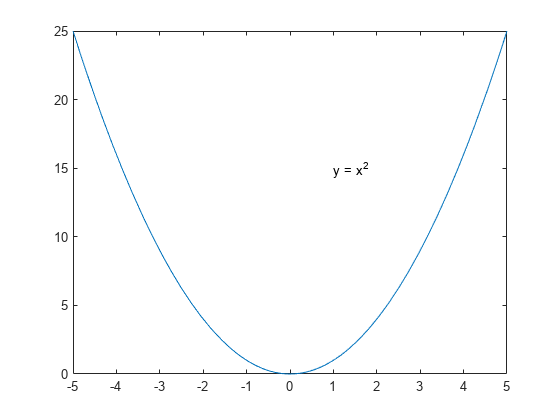texlabel
TeX representation of symbolic expression
Description
texlabel( converts
the symbolic expression expr)expr into the TeX equivalent
for use in character vectors. texlabel converts
Greek variable names, such as delta, into Greek letters. Annotation
functions, such as title, xlabel,
and text can use the TeX character vector as
input. To obtain the LaTeX representation, use latex.
Examples
Generate TeX Character Vector
Use texlabel to generate
TeX character vectors for these symbolic expressions.
syms x y lambda12 delta texlabel(sin(x) + x^3) texlabel(3*(1-x)^2*exp(-(x^2) - (y+1)^2)) texlabel(lambda12^(3/2)/pi - pi*delta^(2/3))
ans =
'{sin}({x}) + {x}^{3}'
ans =
'{3} {exp}(- ({y} + {1})^{2} - {x}^{2}) ({x} - {1})^{2}'
ans =
'{\lambda_{12}}^{{3}/{2}}/{\pi} - {\delta}^{{2}/{3}} {\pi}'
To make texlabel interpret Greek variable
names literally, include the argument 'literal'.
texlabel(lambda12,'literal')
ans =
'{lambda12}'Insert TeX in Figure
Plot y = x^2 using fplot. Show the plotted expression y by using texlabel to generate a TeX character vector that text inserts into the figure.
syms x y = x^2; fplot(y) ylabel = texlabel(y); text(1, 15, ['y = ' ylabel]);

Input Arguments
Version History
Introduced before R2006a
